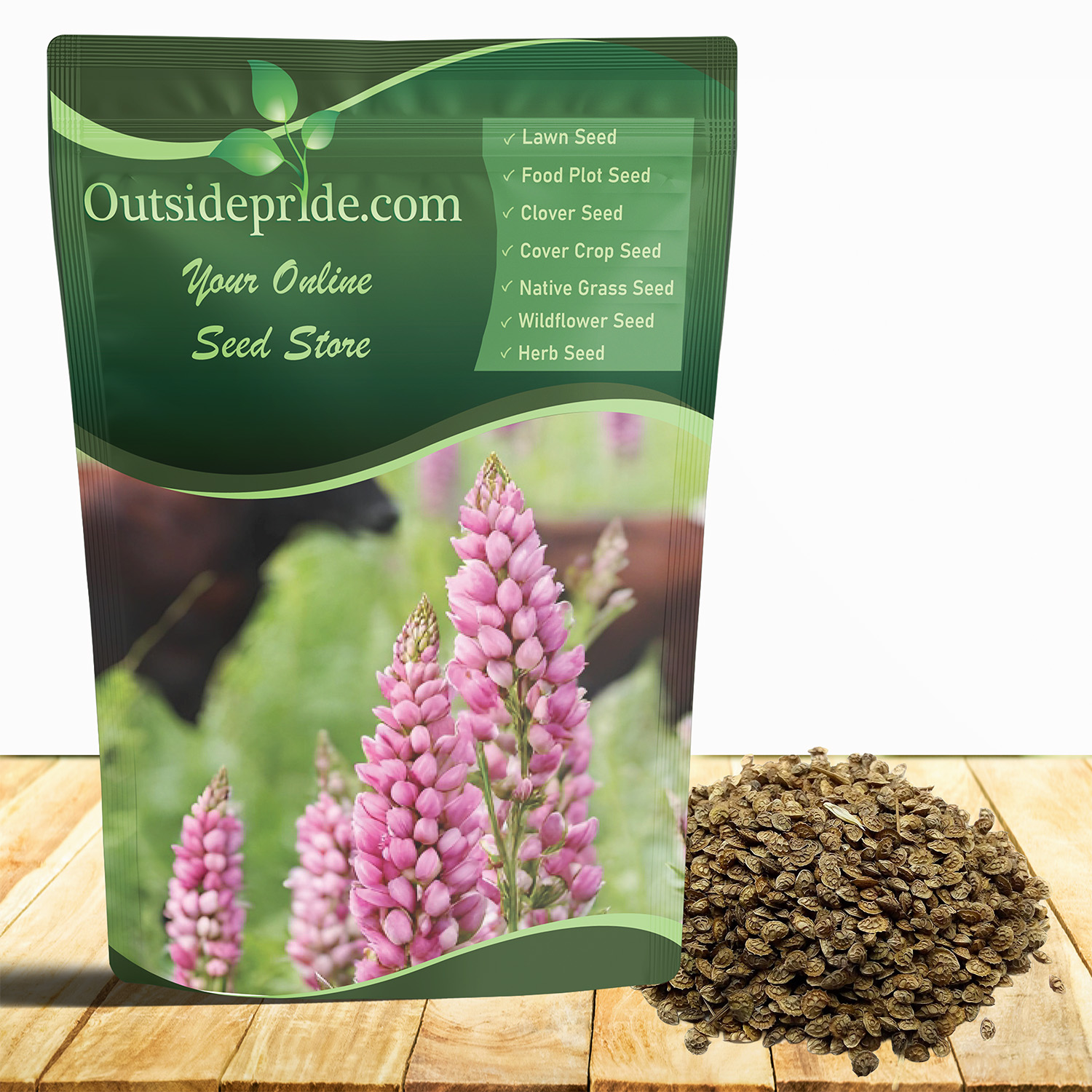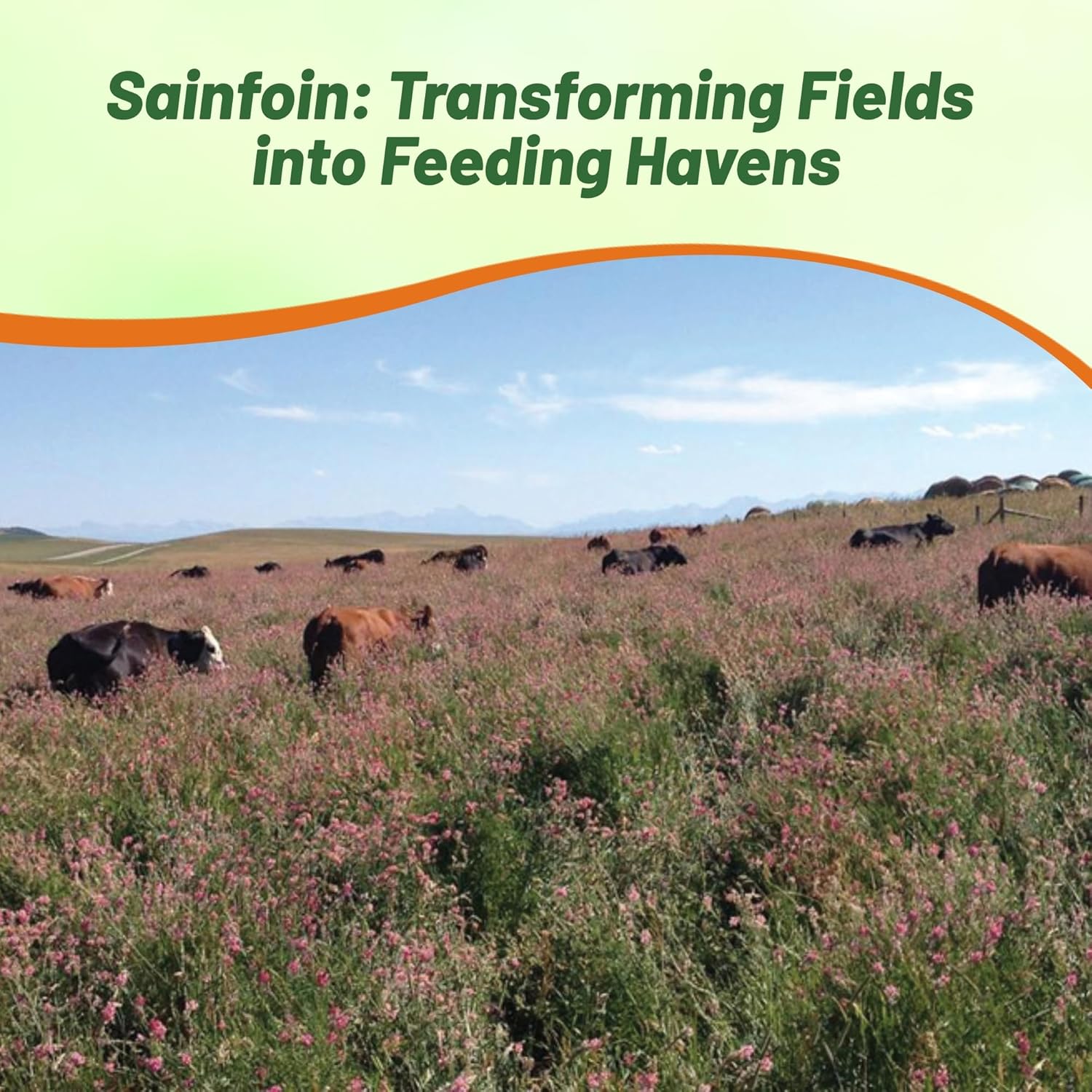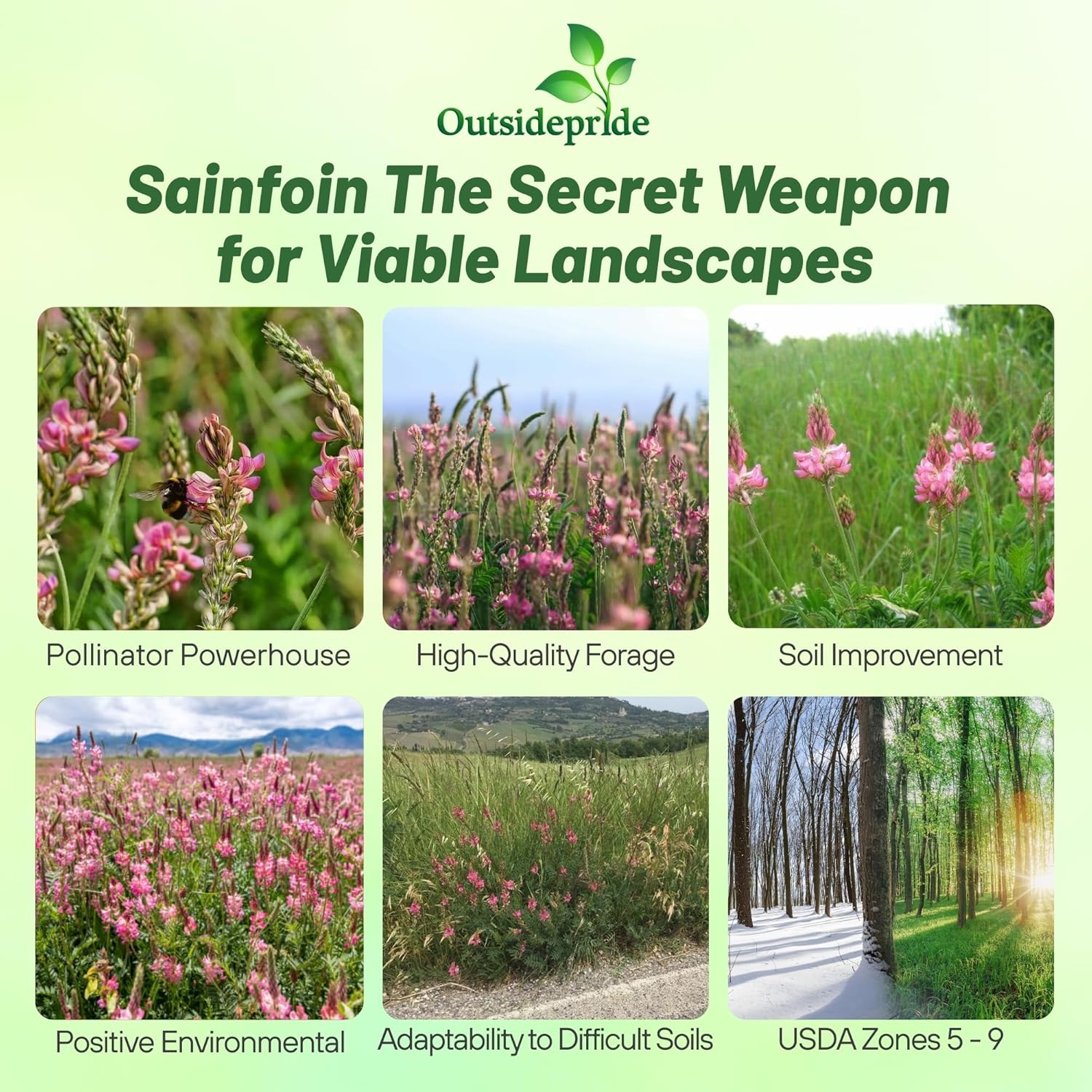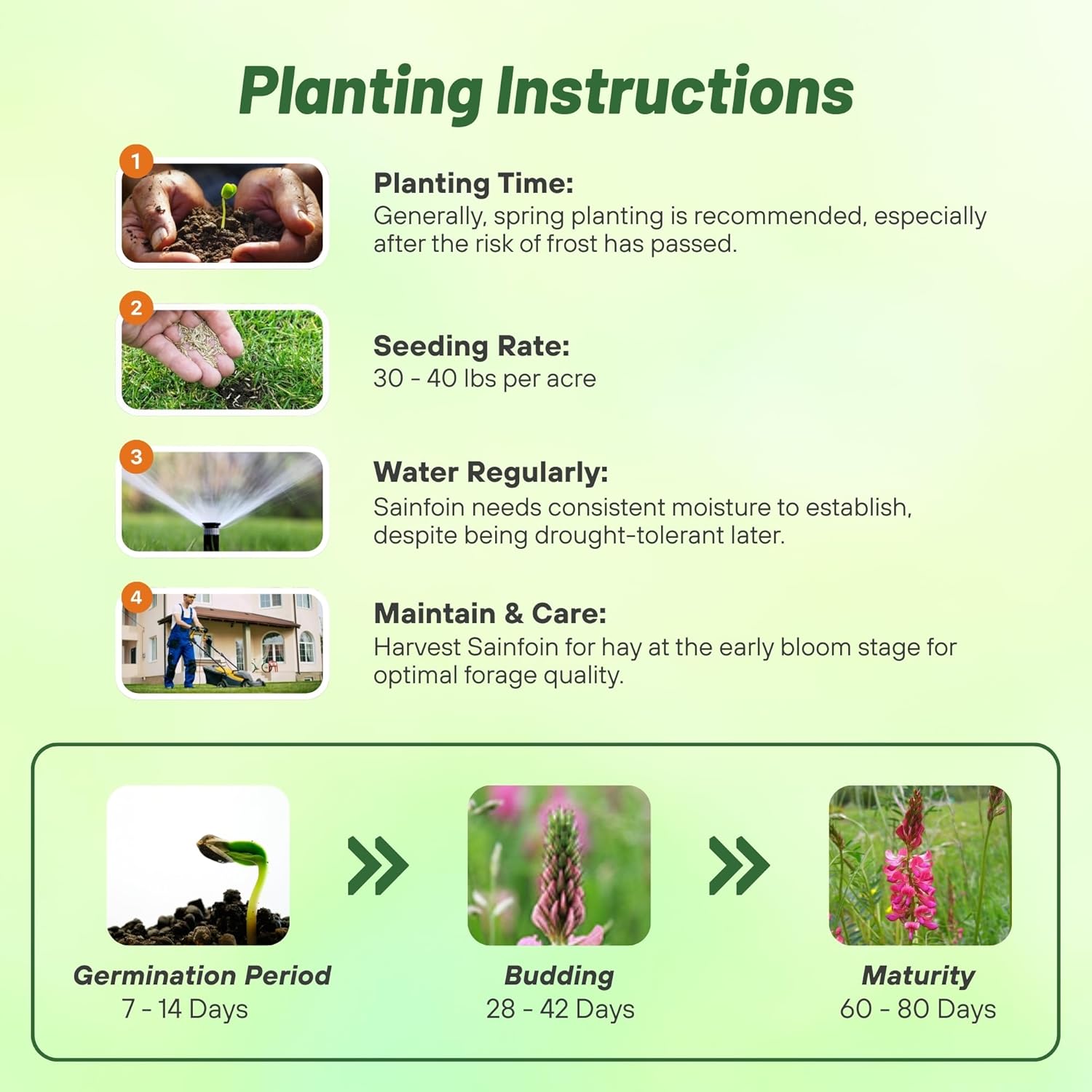Specifications:
Season: Perennial
Height: 36 inches
Environment: Full sun to partial shade
USDA Zones: 5 - 9

Outsidepride Perennial Sainfoin (Onobrychis viciifolia) seeds provide a non-bloating forage option for livestock, deer, and elk, ensuring their well-being. This exceptional legume naturally elevates soil fertility as a nitrogen fixator, reducing the need for synthetic fertilizers and encouraging cost-effective land management practices. Great for hay production, lush pastures, and support diverse wildlife populations. Its drought and cold-tolerant characteristics make it a great choice for various climates and soil conditions. Available in convenient 5 lbs, 10 lbs, and 50 lbs sizes.
This outstanding legume offers a naturally safer alternative to alfalfa, ensuring healthy digestion and significantly reducing the risk of bloating in cattle, sheep, goats, and other grazing animals. Support optimal animal health and well-being with Outsidepride Sainfoin.
Ensure a consistent and nutritious food source for your animals, even during the harshest winter months! These extremely cold-hardy Sainfoin seeds ensure a strong and lasting pasture through winter, giving livestock access to quality forage year-round, regardless of the climate.
These high-yield perennial Sainfoin deer food plot seeds are the great choice! Known for their exceptional drought tolerance, these seeds can thrive even in arid conditions, ensuring your livestock has a reliable food source while conserving precious water resources.
These incredible forage with Sainfoin seeds can bring transformative beauty and health to your soil, creating a thriving environment. These forage increases soil health for the best and optimal results, reducing the need for costly and harmful synthetic fertilizers.

Sainfoin is highly palatable to both sheep and cattle, being preferred over alfalfa and making it a great choice for a nutritious diet that encourages healthy growth and vitality. It may be grazed or used for hay, either alone or in mixtures with grasses, making it a versatile addition to your farm and garden. See the changes and benefits they will bring to your animals' lives. These seeds are a very efficient addition to maintain and elevate the beauty of the area.
Attract vibrant bees, graceful butterflies, and a diverse array of other beneficial insects to your landscape with Sainfoin seeds! As a prolific flower producer, Sainfoin is a magnet for pollinators, making it a valuable addition to any habitat. Moreover, because of the abundance of nectar from its flowers, Sainfoin is a critical resource. Its extended flowering period and the fact that sainfoin produces more honey than any other legume make it invaluable to pollinators! It can be a good addition to any flower arrangement!

To achieve the best results and maximize the potential of your Sainfoin, adhere to the following planting instructions: For optimal growth and stunning establishment, plant these deer seeds at a rate of 30-40 lbs per acre, ensuring even distribution across your chosen area. In addition, please remember these tips to help your seeds be as efficient as ever! The success of your seed lies in your action to maintain it and keep the cycle of the land alive, and beauty rises.
Sainfoin (Onobrychis Viciifolia) - A deep rooted perennial legume similar to alfalfa, but usually cut once a year. The hay is very desirable to many animals. It can be grazed or pastured and Sainfoin is relished by wildlife, especially deer and elk. A prolific flower producer that is excellent for nectar and honey production and pollinators generally. With its extended flowering period and the fact that sainfoin produces more honey than any other legume makes it invaluable to pollinators, attracting a wide range of bumble and honey bees, butterflies and many other invertebrates. Bees feeding on sainfoin produce higher yields of honey.
Sainfoin grows taller than alfalfa, its stem is hollow, there are many leaflets (like a vetch) and its flowers, which are pink, are borne on a raceme. The "seed" used to establish this crop is, in fact, a pod which contains a single seed. Even without the pod, the true seed is large (for a legume); there are only 28,000 seeds per pound.
Sainfoin has good drought resistance and grows well on a variety of soils, it does especially well on high lime, well-drained soils of high fertility. However it does not do well on soils which are wet or have a high water table. It has a low tolerance to flooding, waterlogging or even high water table. It’s intolerant of acidity and salinity; however, it has good drought tolerance and winter hardiness.
Sainfoin is very palatable and is grazed by livestock in preference to alfalfa. It is relished by deer and elk. Although very coarse, the herbage is highly nutritious. Compared with alfalfa, forage dry-matter yields of sainfoin are about 20 percent lower under dryland conditions, and may be 30 percent or more lower in irrigated areas. Onobrychis species have never been known to cause bloat nor is it attacked by alfalfa weevil. It is highly palatable to both sheep and cattle, being preferred over alfalfa. It may be grazed or used for hay, either alone or in mixtures with grasses.
Sainfoin is a natural nitrogen fixator, so Rhizobia in root nodules of sainfoin fix nitrogen and boost soil nitrogen. The roots penetrate to great depths and pull nutrients up from the subsoil. Sainfoin has been found to increase the sequestration of nutrients such as phosphate. It is the ideal crop to sow ahead of cereals or brassicas in the rotation. It takes a year to get established so ideally in the first year it must not be grazed, or if necessary lightly grazed in autumn, and left ungrazed through winter.
Seeding Rate: 30 - 40 lbs per acre
Great For: Cattle, hogs, poultry, sheep, goats, deer, elk, bees/pollinators
Primary Usage: Hay, pasture, wildlife, pollinators















































